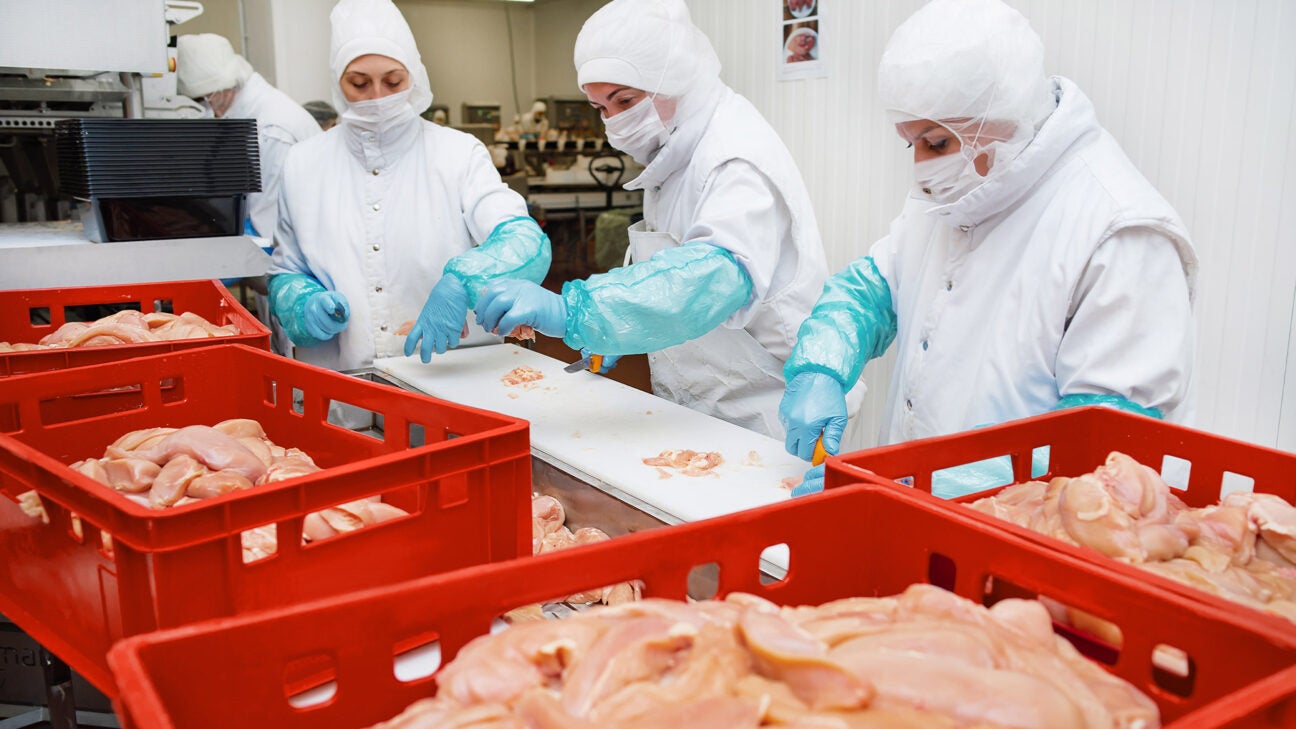
- The USDA has given the final OK for chicken fully grown in a lab.
- Made from cultured cells, the meat is actually chicken just not one hatched from an egg.
- The new cultivated chicken is not likely to be available at grocery stores any time soon.
People who have given up meat to keep their carbon footprints low may no longer have to choose between the environment and a juicy piece of chicken.
The United States Department of Agriculture has given two companies approval to sell lab-grown chicken.
Lab-grown, otherwise known as cell-cultivated, meat is made by growing animal cells in stainless steel tanks in labs. The idea is to create an alternative to agriculturally raised meat, but one that is, in fact, animal and not plant-based. The two companies, Upside Foods and Good Meat had been competing to be the first to be approved to produce lab-grown meat.
As of June 2023, both companies have been given the okay by the USDA.
But is lab-grown chicken the same as traditional chicken? Here’s what to know.
How is meat “cultivated?”
Both companies cultivate the chicken cells in steel tanks. The cells form sheets of 100% chicken. Upside’s lab-grown chicken is formed into chicken cutlet or sausage shapes, while Good Meat turns chicken cells into cutlets, nuggets, shredded meat, and satays.
After the cells are selected, they are mixed with a broth mixture made up of amino acids, fatty acids, sugars, salts, and vitamins and placed into the tanks.
Everything one needs to have chicken, including muscle and connective tissue, grows inside the tank creating sheets. The entire process takes about three weeks for the sheets of poultry cells to fully form, which are then turned into specific food shapes.
Does cultivated chicken, in fact, taste like chicken?
According to both Upside and Good Meat, yes.
And if you’re wondering about the calories or nutrition, the companies say that cultivated chicken has the same nutritional value, chemistry, and taste as your regular chicken hatched from an egg.
Unlike meat substitutes, which are plant-based, lab-grown chicken is truly chicken.
“The most common response we get is, ‘Oh, it tastes like chicken,’” Amy Chen, Upside’s chief operating officer, told the Associated Press.
Why buy cultivated chicken?
Many people may want to switch to cultivated chicken to lower their carbon footprint.
According to the University of Colorado Boulder’s Environmental Center, “Animal agriculture produces 65% of the world’s nitrous oxide emissions which has a global warming impact 296 times greater than carbon dioxide.”
Additionally, some people may balk at eating traditional chicken due to concerns about animal welfare or industrial farming practices.
Where can I buy cultivated chicken?
Currently, it’s not possible to buy lab-grown chicken in grocery stores yet. The products are still too expensive and difficult to produce enough for it to be easily available in a grocery store aisle.
But two high-end restaurants will be featuring the new products.
Upside will be selling its chicken at a San Francisco restaurant called Bar Crenn, while Good Meat chicken will be served at a Jose Andres restaurant in Washington, D.C.
Cultivated chicken versus the commercial chicken farm
The new companies are tiny compared to the industrial chicken farming industry.
Upside, for example, operates in a 70,000-square-foot building in Emeryville, California. Good Meat, based in Alameda, has a 100,000-square-foot plant.
According to the Associated Press, Upside plans to expand its production from 50,000 pounds of cell-cultivated meat to 400,000, but this is just a sliver of the billions of pounds of chickens that are produced agriculturally each year.
“There are two different narratives here,” said Ricardo San Martin, PhD, director of Alternative Meats Lab at UC Berkeley. “One is science-based and one is from a start-up perspective. It is in our best interest that something like lab-grown meat could be part of our work. We did an analysis to know if [production of lab-grown meat] is feasible at scale, and that’s where we encountered problems because the science and technology tell us that we are very far away from making anything commercial.”
San Martin says that it is impossible to even make a dent in the poultry industry with lab-grown chicken, as the number of chickens killed every year for consumption is 9 billion. The cost of lab-grown chicken is already expensive for the small-scale batches that it can produce. Nine billion is, at the moment, nothing short of impossible.
“[Lab-grown chicken] won’t affect a thing at all in the chicken industry. It’s not a question of whether or not you can eat it safely or produce it. It’s a narrative that is a business narrative, but it’s not a real-world narrative based on science and based on capital cost. This is going to be a very niche market for the elite who would like to try this in expensive restaurants, but we are far away from feeding the world,” he said.
Lab-Grown Chicken is Here, What to Know
Source: Pinoy Lang Sakalam



0 (mga) komento:
Mag-post ng isang Komento